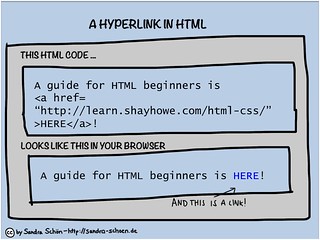-
8
Apr
The author Donald J. Sobol first published his adventures of boy super sleuth “Encyclopedia” Brown in 1963. All 29 books in this popular series presented the reader with a set of short mysteries, each including factual disparities somewhere within. Young readers were encouraged to read the text closely to try to identify the “slip-up” that breaks the case and then turn to the “Answers” section in the back of the book to verify their finding.
An important part of writing in digital spaces is the use of “hyperlinks.” In their most basic form, a “link,” or hyperlink is word, phrase or image on a Web page that instructs a computer to move to another relevant Web page. Much like Sobol’s “Answers” section linked readers to the facts that solved each case, hyperlinked writing provides links that are pertinent to a piece of writing on the web and help to strengthen the writing by providing direct access back to source documents and related materials for the writer’s audience.
An increasingly more important of digital texts, hyperlinked writing is an important transliteracy skill to develop in students, beginning even in the preschool years. While they may not be familiar with the terminology associated with hyperlinks, young children almost innately understand the point and click component of navigating hyperlinked content, therefore teaching young children the vocabulary associated with hyperlinked writing is crucial. Parents and teachers can model this vocabulary as children are actively engaged with digital content by responding with phrases like, “Look what happened when you clicked the link! You opened a new page,” or “If you want to move one, click on the link on the bottom of the screen.” Infusing vocabulary with associated play activities is a great way to provide early exposure to the tenants of hyperlinked writing.
In the primary grades, students can begin to use blogs to draft, edit, and publish writing responses that include hyperlinks. Teachers will need to begin by modeling the discrete skills of hyperlinking for students. For example, a teacher might begin by composing the phrase “Brown bear, brown bear what do you see?” As part of the predictable response, “I see a ___ looking at me,” the teacher demonstrates how to insert a link to a picture of the animal included in the response. After repeated modeling, the teacher can then integrate student created (and hyperlinked) responses into writing center activities. As an additional support, teachers can created step-by-step guides for the hyperlinking process that include screenshots for students to reference.
- Published by brueckj23 in: Raised Digital
- If you like this blog please take a second from your precious time and subscribe to my rss feed!


Leave a Reply